#academic fraud
Explore tagged Tumblr posts
Text
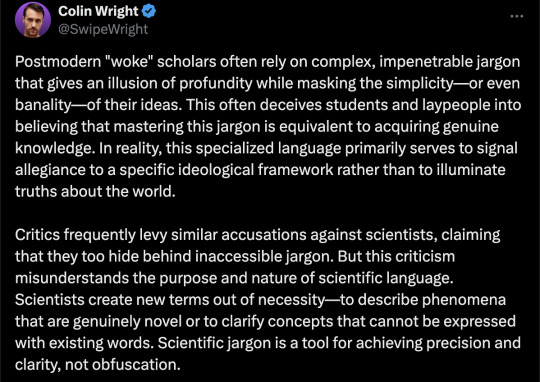
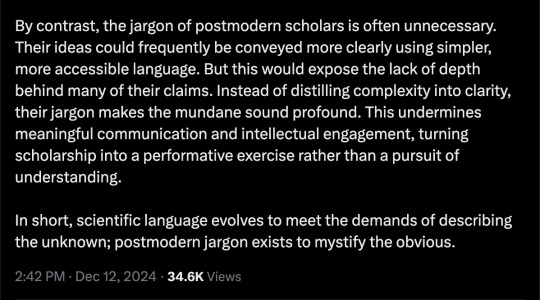
youtube
https://www.merriam-webster.com/dictionary/specious
1 : having a false look of truth or genuineness : sophistic specious reasoning 2 : having deceptive attraction or allure 3 obsolete : showy
--
Noam Chomsky: If you look at what's happening, I think it's pretty easy to figure out what's going on. I mean, suppose you are a literary scholar at some elite university. Or, you know, anthropologist or whatever. I mean, if you do your work seriously, that’s fine, you know. But you don’t get any big prizes for it.
On the other hand, you take a look over in the rest of the university and you’ve got these guys in the physics department and the math department and they have all kinds of complicated theories, which of course we can’t understand, but they seem to understand them. And they have, you know, principles and they deduce complicated things from the principles and they do experiments and they find either they work or they don’t work. And that’s really, you know, impressive stuff.
So I want to be like that too. I want to have a theory. In the humanities, you know, literary criticism, anthropology and so on, there’s a field called theory. We’re just like the physicists. They talk incomprehensibly, we can talk incomprehensibly. They have big words, we’ll have big words. They draw, you know, far-reaching conclusions, we’ll draw far-reaching conclusions. We’re just as prestigious as they are.
Now if they say, well look, we’re doing real science and you guys aren’t, that’s white male, sexist, you know, bourgeois or whatever the answer is. How are we any different from them?




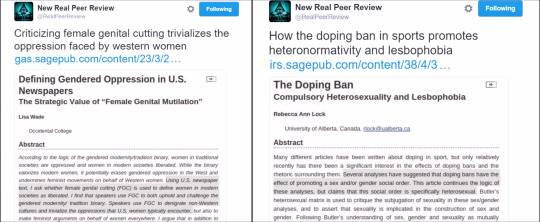
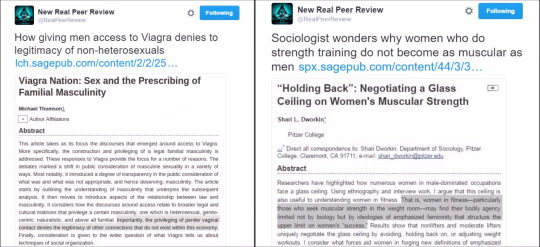

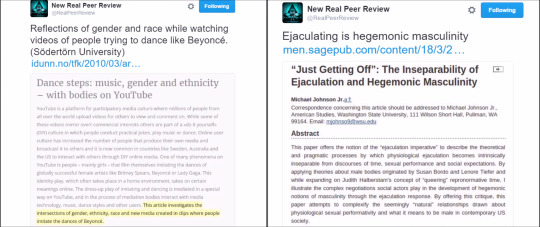
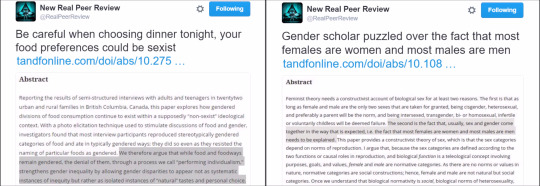
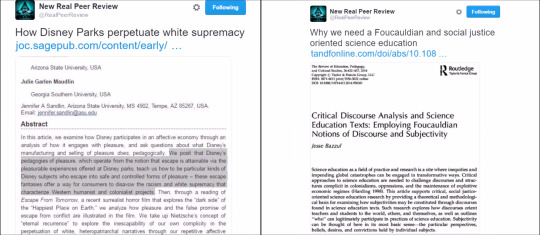



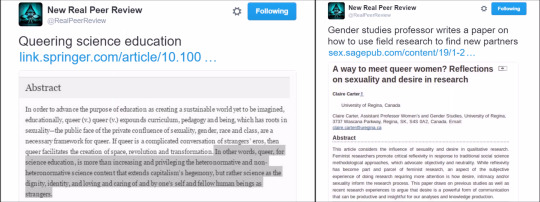



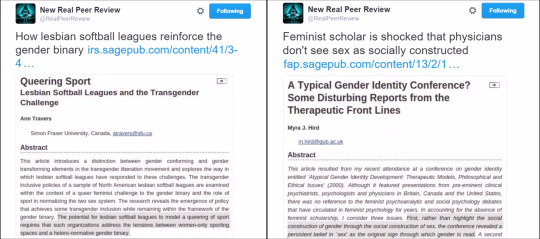

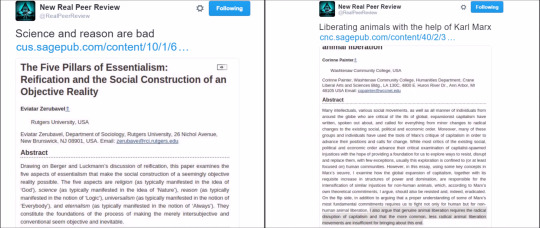

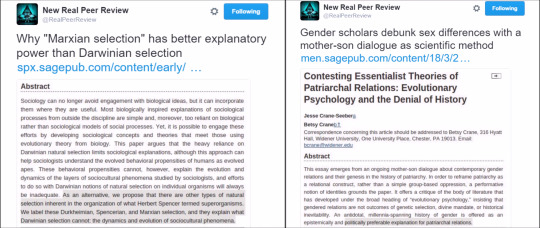

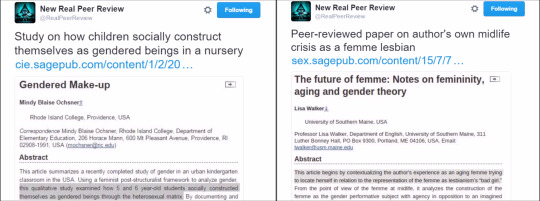
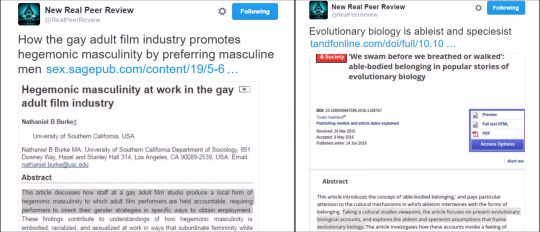
==
I worry that when I describe this idiocy as "fraud," people think I'm exaggerating, being hyperbolic or otherwise overstating it.
I'm not. If anything, I'm understating it.
All of this postmodern crap we're dealing with is completely fake. All this ridiculous intersectional jargon is a big grift. All of these domains producing this ridiculous nonsense are bogus and corrupt. All the scholarship they produce is fraudulent. It's fake from top to bottom.
All of it.
These people are cloaking asinine retardation in fancy words to cover up how asinine and retarded this asinine retardation is.
The people producing it are shallow and stupid. Not to mention, envious and spiteful about the status and authority of science. They just use absurd jargon to hide that fact and trick you into thinking it's too deep and profound for you to understand. But when it's decoded into simple English, à la the Tweet summaries above, the retarded, moronic nature becomes obvious.
The response to this kind of ridiculous shit needs to be laughter and derision, not tenure or a tertiary qualification.
We have to get rid of it because it's destroying our societies.
#Colin Wright#postmodernism#woke doctrine#feminism#feminist theory#woke nonsense#social constructivism#academic fraud#defund gender studies#gender studies#academic corruption#critical theory#critical race theory#intersectionality#intersectional feminism#patriarchy theory#patriarchy#science#what science is#religion is a mental illness
68 notes
·
View notes
Text
“We want to make our students college and career ready…. Nowhere in college do you get 50% for doing nothing. Nowhere in the world of work do you get 50% for doing nothing…If I don’t show up to work, they don’t pay me 50% of my salary even if I made a reasonable attempt to get there.” (However, this keeps the classroom seats filled, the state aid based on mere attendance—results be damned—rolls in, and another generation of graduates is robbed of their futures. Welcome to Woke public education!)
#government#save america#woke#woke educators#woke is a joke#public education#public school#education#academic malpractice#academic insanity#academic fraud#government schools
6 notes
·
View notes
Text
Scholarship student who tutors to pay the bills, putting on a costume after the wealthy parents offer enough money she can afford Maruchan for a semester if she can pass the mirror test for their darling little shrimp.
4 notes
·
View notes
Text
At the moment, my academic idol is having beef with the homo neledi guy ( Lee Burger ). He did it because he got a Netflix documentary out of it, thus fame & money.
Scientific fraud is the most baffling thing ever to me like do they think they're just going to make a huge breakthrough and no one will notice that it's fake by trying to replicate their results
#homo neledi#academic fraud#paleoanthropology#anthropology#paleontology#palaeontology#academia#science
136K notes
·
View notes
Text
What I've Been Reading: October 22, 2023
It’s been a while since I’ve checked in with y’all. I’m way behind on my video game diaries. I promise I’m still writing them! But for now, let’s do a quick roundup of stuff I’ve read recently. After the jump, pieces on academic fraud, suicide, and game development. Continue reading Untitled
View On WordPress
0 notes
Text
Get a load of this guy's ethics (or lack thereof)
15 notes
·
View notes
Text
Spain.....
By Nuria Muíña García February 29, 2024
A student organization at the Autonomous University of Barcelona (UAB) is calling for the expulsion of a prominent professor of Social Anthropology, alleging she was “transphobic.” The Socialist Youth Organization, also known as OJS, is demanding the termination of Dr. Silvia Carrasco, after she had been giving talks discussing the necessity of biological sex classifications in anthropology at the beginning of the semester.
On February 12, the OJS released a video on social media titled “let’s organize against transphobia.” In it, a female student read a speech targeting Carrasco and slamming the university for allowing “untouchable academic freedom” on sensitive subjects.
“Today, classes return to the UAB campus, ideological control returns, reactionary and transphobic speeches return to our classrooms,” she said. “Under the banner of untouchable academic freedom, they allow professors to impart content under ideological and scientific criteria, turning the classroom into a space for the production and legitimization of reactionary and… transphobic speeches… typical of social democratic politics, narratives that try to explain gender oppression from a sexual essentialism from biologist positions.”
see rest of article
By Nuria Muíña García March 6, 2024
Concerns about “trans fraud” have emerged after dozens of male civil servants in one small community changed their gender identity reportedly just to get benefits allocated for females. The wave of gender change approvals follows the implementation of the Trans Law, which eased the regulations surrounding legal identity changes.
In the small, autonomous city of Ceuta alone, it has been revealed that 37 male civil servants have changed their legal gender. Of them, the vast majority are associated with the Military, National Police, Civil Guard, or Local Police, and these new “females” have curiously all chosen to retain their male names and continue their lives “as men.”
One of the men has come forward to boast of his success, stating that he changed his legal gender after the Trans Law was implemented in Spain in March of 2023.
Roberto Perdigones, a 35-year-old Army corporal, changed his legal sex to “female” after deciding he identified as an “intersex bigender” person. Perdigones explained that “externally, I am a straight man and internally a lesbian woman.”
Perdigones says he first discovered that changing his registered sex would afford him benefits after reading an update in the National Police Exam syllabus with a list of “possible” gender identities one may have. Perdigones found a gender description he felt he matched, so pursued the change.
“On the outside, I feel like a heterosexual man, but inside I am a lesbian woman, which is what prevails. That’s why I made the legal change to female,” he says. “I did it because I could,” Perdigones admitted to El Español.
See rest of article
#Spain#Autonomous University of Barcelona (UAB)#The Socialist Youth Organization known as OJS#Dr. Silvia Carrasco is telling the truth#untouchable academic freedom#Trans fraud#Men abusing gender identity laws#Trans Law#Ceuta#Transbian
12 notes
·
View notes
Text
Maybe we should all just die
GUESS WHO HAS 1 AP EXAM TO GO!!!@ AP BIO I WILL EAT YOU ALIVE
1 note
·
View note
Text
Too bad one thing to help you in Big Scary Exam is a good night's rest, yet a good night's rest is all no no because Big Scary Exam tomorrow.
#like ive taken a bazillion exams#what makes this one different#if only the fact there are going to be three professors and one me#and they said its going to be more like a discussion rather than like. me. reciting textbook or whatever.#man. i will see how ill do tomorrow. i just hope i dont disappoint my three profs#like i know my advisor for 6 years now like. shes my academic mom. i cant didappoint her.#and the 2 other profs i know for 3 years. they think im smart. guess theyll see tomorrow 🥲#before every exam i feel like a fraud who doesnt know anything#but i also know im pretth okay. like i know stuff.#but what if i dont#you know
3 notes
·
View notes
Text


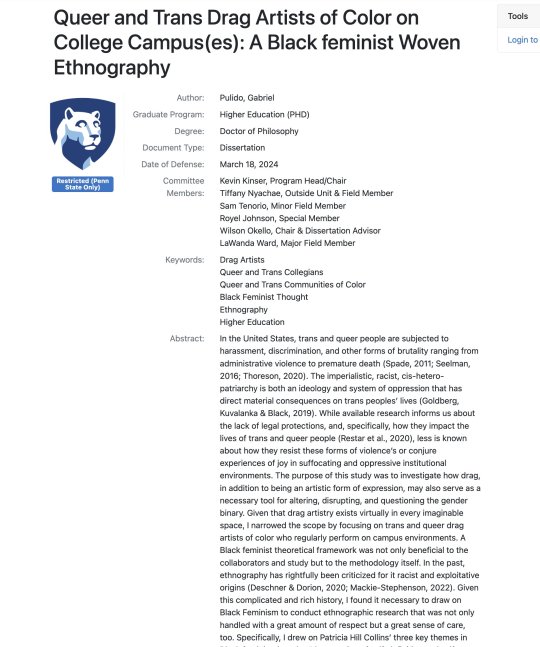
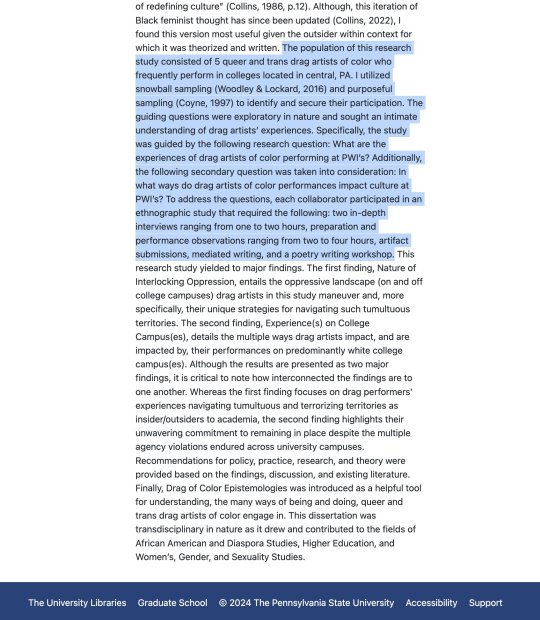
-

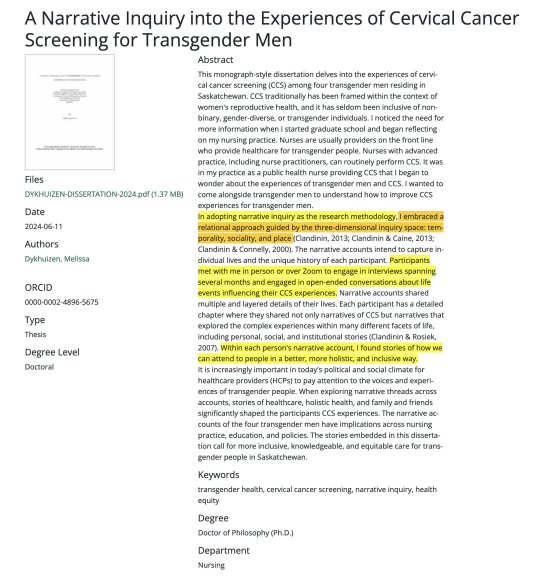
-


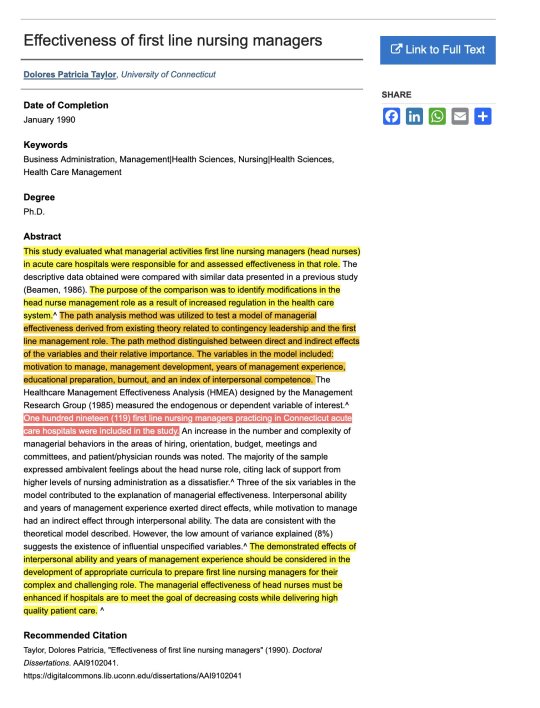





-

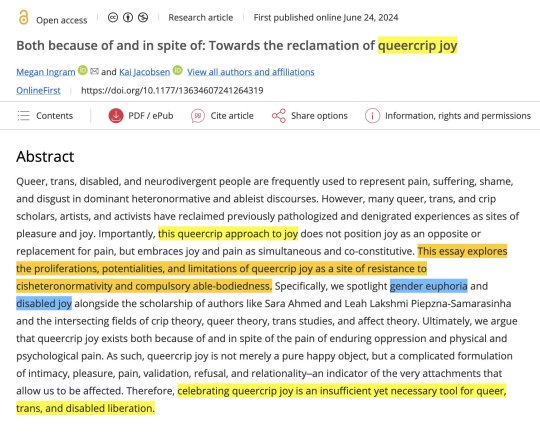
-

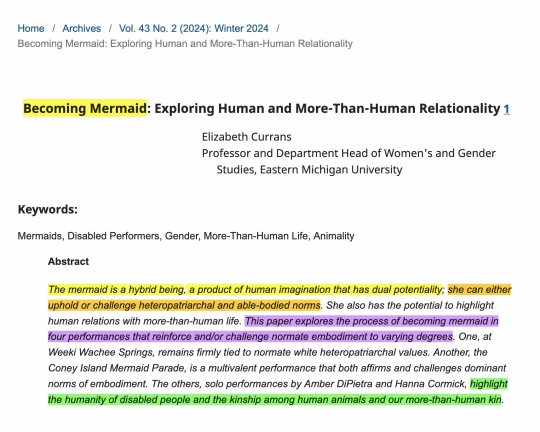
-



-


-



==
This might be funny if it wasn't pipelining pure toxic excrement into the waters of our knowledge-making institutions.
It's all fake. But now it's cited and treated as legitimate when it still isn't and never was. This is a form of corruption and fraud.
#Colin Wright#academic corruption#academic fraud#defund gender studies#gender studies#women's studies#scholarship#idea laundering#feminism#modern feminism#identity studies#disability studies#fat studies#heteropatriarchy#cisheteropatriarchy#cisheteronormativity#gender ideology#gender identity ideology#queer theory#queer studies#academic gibberish#academic jargon#word salad#academic nonsense#religion is a mental illness
30 notes
·
View notes
Text
I CAN DO THIS!!!! I CAN LEARN TO BE A THEATER DESIGNER!!!! YES I AM JUST STARTING OUT AND DOING THIS FOR THE FIRST TIME!!!! THATS CUZ IT IS A TRADE AND YOU LEARN A TRADE BY PRACTICING!!!!! SO I AM GOING TO PRACTICE DAMMIT!!!!
#i am realizing i have the capacity to be rly ambitious and hardworking when it’s something i care about#which i didn’t think i did. because adhd and academic struggles and such#but another side effect of caring a lot about this is i am rly disappointed and worried when i feel like i’m not doing well enough#which is a feeling i think most people get academically#but i turned that feeling off in my brain for a long time cuz again. at a certain point i was academically struggling#and i couldn’t be disappointed anymore#like it was just less stressful to care a little less#which i am currently experiencing in my classes right now actually. need to deal with that#anyway#idk i keep finding out how much i don’t know about theater design and then feeling so so embarrassed#and thinking i might be a fraud#but then people look at my work and they say nice things and i am deciding to take that to heart!!!#and just hope that they’re right#it’s existential about career hours rn#also mandatory acknowledgement that i’m privileged for even considering an artistic careen#and i’m definitely gonna be living off ice soup if i try to make this happen#uh. that is all . yeah#ok yk what i should probably be a theater professor#that is definitely the biggest way i’ve seen theater professionals get regular gigs (on college shows) and make enough money to live#and also have access to massive prop and set collections!!!!!#which is what it’s really all about baybeeee#ok that is all goodnjght#theater#career#rambling
5 notes
·
View notes
Text
I applied for a position at a local(ish) credit union and was contacted for a preliminary phone interview. 😳 Am I gonna escape for-profit corporate soon?
#i really went all in with my academic accolades and fancy vocabulary to disguise the fact that i'm basically a call center associate rn lol#i mean...i'm a really good one with a strong grasp on bank fraud!#and i'm fucking smart as shit#so hire meeeee#llbtspost
5 notes
·
View notes
Text
This was posted by a Harvard professor

#it’s a joke. about how prevalent massive academic fraud has been at Harvard#how many famous frauds they’ve produced and nurtured
25K notes
·
View notes
Text
aaaaargh
#forgot i need letters of recommendation when i start applying for grad school#I didnt TALK to profs in undergrad i was a hot messsss#i could ask my current manager lmfao#hi bestie i wanna leave this job and go somewhere else for school will u help#i could ask the profs who are advising the review article im group writing#but they don't rlly know me or my research interests very well#tee hee feeling like an academic fraud#im smart and driven guys i promise
1 note
·
View note
Text
i cannot in good faith ask anyone to watch a three part youtube documentary but the BobbyBroccoli cold fusion saga is so good. Number one motivation to go into academia and commit fraud
#just imagining future students being like wow this fraud was a prof at our uni#the americans had their fair share of academic dishonesty#its our turn
1 note
·
View note
Text
i believe in the value of artistry and shit like i Am an artist myself but sometimes i see a fellow artist and im like respectfully what you need is to get a job. you can’t live on selling badly rendered anime art. sorry
#like im not a great artist but i do believe you need a level of technical skill before you can expect to make a liveable wage off art#which is why i dont expect to lmao#research and also academic fraud job pays the bills (barely) and art uhhh pays for takeout once a week
1 note
·
View note